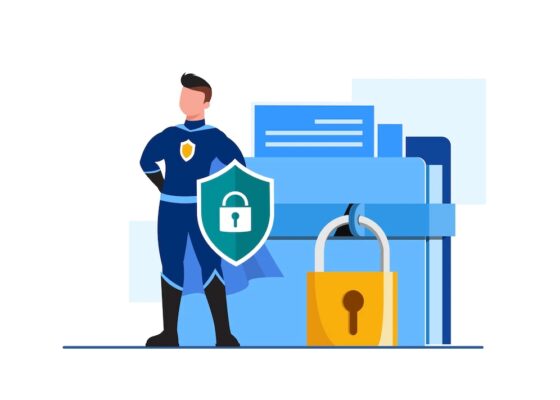Video is quickly becoming one of the primary ways we distribute information and interact with our viewers, whether it’s our internal teams or our global audience network. Video is also known to be susceptible to a variety of breaches, from simple screen recording theft to dangerous user data extraction. So if you plan to distribute high-value video content, you need high-end security to match it.
Important features for secure video delivery
There are specific features designed to support secure video streaming. These security options can be used to host secure live streams and on-demand video libraries. Let’s look at some of the key features to look for when comparing video hosting platforms for secure streaming.
Content Restrictions
Most video streaming platforms have features that allow content to be restricted within certain parameters. The two main ways in which content is often restricted on web video platforms are: domain restrictions and geographical restrictions.
Password Protection
The most basic level of security is password protection, which is considered to be one of the basic security features of online video platforms. As the name implies, password protection is a feature that allows you to protect your content with a password, so that only those with the password can access the content and features of the video streaming platform. This method may be essential for use in a small business or organization or to pass video privately before sharing it publicly. If you are considering using password-protected streaming, keep in mind that this method is not foolproof. Passwords can easily be compromised among friends and colleagues or even in online forums.
Geographic and Domain Restrictions
Broadcasters can use two types of audience restrictions to protect online video. The first is domain restriction. As the name implies, this setting limits the domains to which your stream can be played. To set this up, you enter the websites that are allowed to play the video. Once up and running, embedding your video on any other site will fail. This helps prevent others from embedding your video player on their sites, thus helping to avoid piracy. The second type of restriction is geographical restriction. This method uses IP addresses to whitelist certain countries/regions. Similar to the above method, you can choose which countries can watch your videos. Users who live outside of these countries will not be able to watch them.
Paywall Protection
Most video content creators prefer to profit from their content, and if it’s not the right thing to do in the first place, it certainly will be at some point in the future. There are two ways to solve the cashing out problem – one is to use advertising to generate content revenue through ads, and the other is to charge for access to the video. Paywall protection is a security feature on online video platforms that ensures that only paid users of the platform can access the content, rather than the content being open to everyone, just as open video platforms like YouTube monetize their content through advertising.
Dynamic Token Security System
An advanced method for securing video is tokenized video delivery. This security feature is especially valuable for video content that you embed in any website or application. The protocol for streaming video over the Internet involves a concept called tokens. These tokens are essentially pieces of information that can be used to identify who is accessing the stream. A token authorization system is a security feature that allows online video platforms to verify that all video streams on the platform are accessed only by authorized people.
HLS Video Encryption
HLS stands for HTTP Live Streaming. While there are many types of encryption algorithms, the most common method for HLS encryption is AES-128. The Advanced Encryption Standard (AES) is a packet cipher that encrypts and decrypts data in 128-bit blocks. Most online video platforms should offer HLS video encryption as a standard security feature. This makes the platform more secure because it ensures that the connection between the streaming server and the receiving viewer is highly protected, thus preventing unauthorized access to the platform’s content.
In a world of rapidly evolving threats and attack vectors, secure video streaming is a must. It is important to evaluate your goals and select the best security features for your streaming needs. Thankfully, when you use files like XMediaTV, you can rely on the security tools provided to protect your content. Professional Grade Video Hosting PlatformNot yet streaming with XMediaTV and ready to try our secure online video platform? Simply click the button on the page to sign up for 14 days of free streaming.
